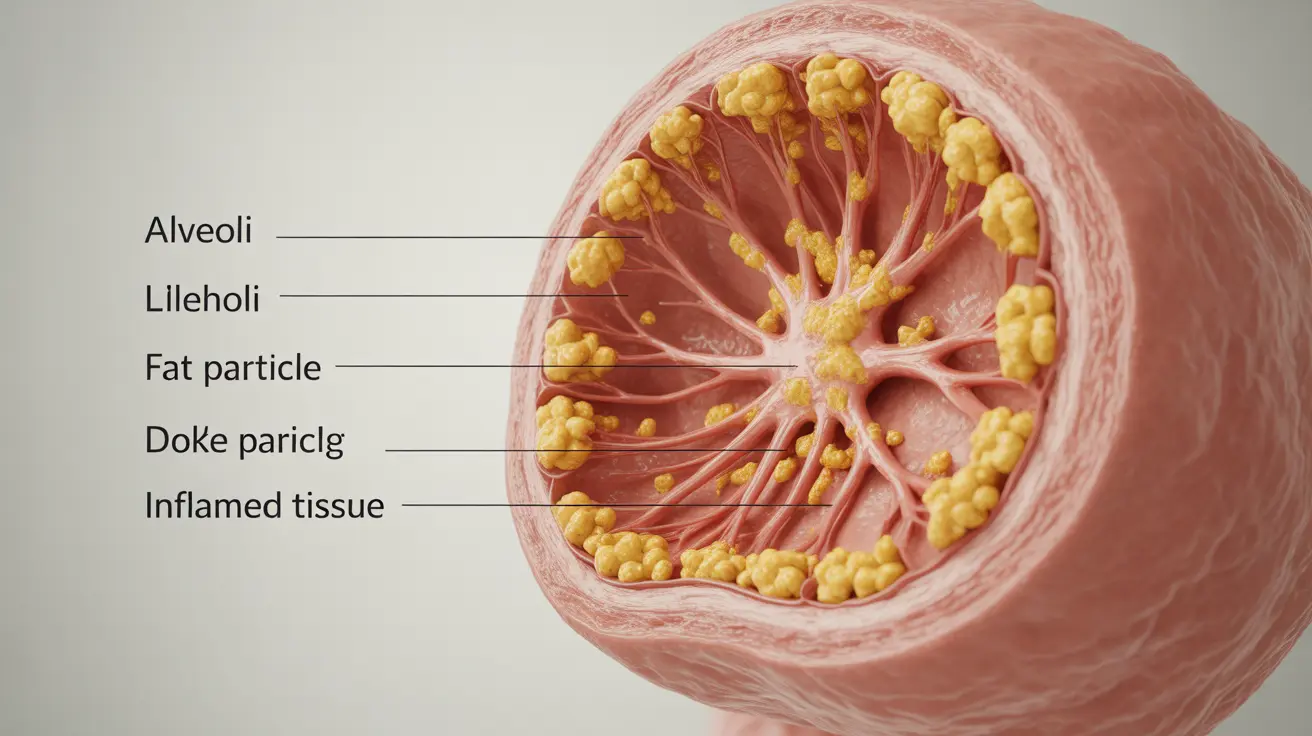Lipoid pneumonia is a rare but serious respiratory condition that occurs when fat particles enter the lungs, causing inflammation and potential damage to lung tissue. This distinct form of pneumonia can develop through various mechanisms and requires careful medical attention for proper diagnosis and treatment.
Understanding this condition is crucial for both healthcare providers and individuals at risk, as early recognition and appropriate intervention can significantly impact recovery outcomes. Let's explore the key aspects of lipoid pneumonia, including its causes, symptoms, diagnostic approaches, and treatment options.
Types and Causes of Lipoid Pneumonia
Lipoid pneumonia can be classified into two main categories based on how oil or fat enters the lungs:
Exogenous Lipoid Pneumonia
This type occurs when external substances containing oil or fat are inhaled or aspirated into the lungs. Common sources include:
- Oil-based nose drops or nasal sprays
- Mineral oil laxatives
- Oil-based medications
- Occupational exposure to oil-based products
- Lip gloss or petroleum jelly aspiration
Endogenous Lipoid Pneumonia
This form develops when the body's own fat tissue enters the lungs, typically due to:
- Blocked airways
- Lung tissue breakdown
- Certain underlying health conditions
- Post-inflammatory changes in lung tissue
Common Signs and Symptoms
The symptoms of lipoid pneumonia can vary significantly between individuals and may develop gradually over time. Key indicators include:
- Chronic cough
- Shortness of breath
- Chest pain or discomfort
- Fever in some cases
- Difficulty breathing during physical activity
- Weight loss
- Fatigue
Diagnostic Procedures
Healthcare providers use various methods to diagnose lipoid pneumonia accurately:
Imaging Studies
- Chest X-rays
- CT scans
- MRI scans
Clinical Tests
- Bronchoscopy with tissue sampling
- Sputum analysis
- Blood tests
- Pulmonary function tests
Treatment Approaches
Treatment for lipoid pneumonia typically involves multiple strategies:
Immediate Interventions
- Stopping exposure to the causative substance
- Supportive respiratory care
- Oxygen therapy if needed
Medical Treatments
- Corticosteroids for inflammation
- Therapeutic lung washing (whole lung lavage)
- Antibiotics if secondary infection present
Prevention Strategies
Preventing lipoid pneumonia involves several key measures:
- Avoiding oil-based products near the nose and mouth
- Using water-based alternatives when possible
- Proper positioning during eating and drinking
- Regular medical check-ups for at-risk individuals
- Occupational safety measures when working with oils
Frequently Asked Questions
What are the common symptoms of lipoid pneumonia that I should watch for?
Common symptoms include persistent cough, shortness of breath, chest pain, and fatigue. Some patients may also experience fever, weight loss, and difficulty breathing during physical activity. These symptoms often develop gradually over time.
How is lipoid pneumonia diagnosed and what tests are typically used?
Diagnosis typically involves imaging studies like chest X-rays, CT scans, and MRI scans. Doctors may also perform bronchoscopy with tissue sampling, sputum analysis, blood tests, and pulmonary function tests to confirm the diagnosis and assess severity.
What causes lipoid pneumonia and how do exogenous and endogenous types differ?
Exogenous lipoid pneumonia is caused by external oil substances entering the lungs, such as from oil-based medications or occupational exposure. Endogenous type occurs when the body's own fat tissue enters the lungs due to underlying conditions or tissue breakdown.
What treatments are available for lipoid pneumonia and when are corticosteroids recommended?
Treatment options include stopping exposure to the causative substance, supportive respiratory care, and oxygen therapy. Corticosteroids are often recommended to reduce inflammation, particularly in severe cases. Some patients may require therapeutic lung washing (whole lung lavage).
How can I prevent lipoid pneumonia, especially if I am exposed to oil-based products or at risk?
Prevention involves avoiding oil-based products near the nose and mouth, using water-based alternatives, maintaining proper positioning while eating and drinking, and following occupational safety measures when working with oils. Regular medical check-ups are important for at-risk individuals.




